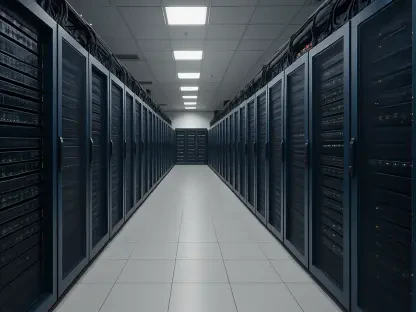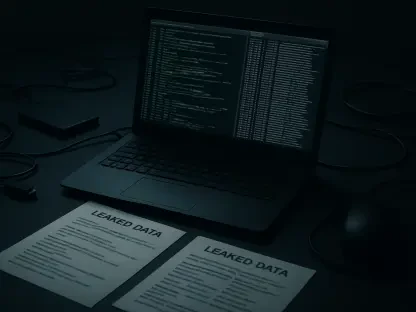The recent ransomware attack on Charles Darwin School in Biggin Hill, Kent, provides a stark reminder of the vulnerabilities within educational institutions. This attack led to a temporary closure of the school and highlighted various security concerns and operational disruptions that have far-reaching consequences.
The Impact on School Operations
Immediate Closure and Communication Breakdown
The ransomware attack forced Charles Darwin School to shut down for at least a week, significantly affecting its ability to maintain normal operations. Essential communication systems such as email, internet, and cloud-based services were disrupted, leaving staff unable to access their emails on school networks. This disruption extended to the phone systems, which were restricted to urgent communications only. The inability to use these communication channels created a chaotic environment, as staff struggled to coordinate administrative tasks and keep parents informed about the situation. Simultaneously, students faced limitations in their learning activities, with their Microsoft 365 accounts disabled, hindering their ability to engage in online learning and collaborate on schoolwork.
The cybersecurity incident casts a spotlight on the vulnerability of educational institutions to such attacks. The immediate impact was felt not just in the classrooms but rippled through the entire school community, affecting teachers, students, and parents alike. The effectiveness of educational activities was severely compromised, as both instructors and learners struggled to adapt to the sudden loss of digital resources. This lapse in communication also meant that emergency and contingency planning had to be administered in real-time, adding to the stress and confusion already prevailing among the school staff and students.
Extended Disruption and Challenges
Charles Darwin School anticipated a prolonged period of approximately three weeks to restore full internet access, email services, and other critical systems that were crippled by the ransomware attack. This extended disruption reveals the severity of the attack and the significant challenges the school faced in recovering compromised systems. During this time, both staff and students encountered obstacles in maintaining educational activities, particularly those reliant on digital platforms for assignments, research, and communication. Recovery efforts involved a painstaking process of identifying which systems were affected, determining the extent of the damage, and implementing a step-by-step restoration plan.
The school’s IT team had to work around the clock alongside external cybersecurity experts to rebuild and secure the digital infrastructure. The prolonged downtime tested the institution’s resilience and highlighted the need for robust incident response strategies and disaster recovery plans. While the physical school environment bore the brunt of the disruption, remote learning also took a hit, as students lost access to vital educational materials and online classes. This experience underscores the dependency of modern educational systems on digital tools and the pressing need for adequate cybersecurity measures to ensure continuity in the face of such threats.
Data Security Concerns
Uncertainty About Data Compromise
Among the major concerns following the ransomware attack was the potential compromise of sensitive data, creating a state of heightened anxiety among parents, staff, and students regarding their personal information’s safety. Headteacher Aston Smith pointed out the risk that all information held by the school, including detailed student and staff records, could have been accessed during the attack. This uncertainty amplified fears of identity theft and misuse of confidential information, causing widespread unease within the school community. The lack of clarity around what specific data may have been compromised made it challenging to provide reassurance to those affected, prolonging the period of uncertainty and stress.
In the wake of the attack, questions regarding the strength of the school’s data protection measures and their effectiveness against sophisticated cyber threats became a focal point. Parents were particularly concerned about the potential exposure of sensitive data, such as their children’s personal details and academic records. The incident served as a stark reminder of the critical importance of cybersecurity in safeguarding sensitive information, reiterating the need for educational institutions to implement stringent data protection protocols. This event underscores that schools must be proactive in evaluating and enhancing their cybersecurity frameworks to protect against increasingly sophisticated cyber threats.
Third-Party Cloud-Based Systems
Despite the dire situation, there was some measure of relief in knowing that external providers’ cloud-based information appeared to remain secure, indicating that the attack may have been contained within the school’s internal infrastructure. This partial mitigation of damage suggested that the schools’ external data partnerships could potentially withstand similar cyber threats due to their robust security protocols. However, it also raised questions about the overall integration of the school’s cybersecurity measures with those of their third-party affiliates. The fact that the cloud-based systems managed by external providers did not seem to be compromised provided a silver lining amid the overall chaos but did not entirely alleviate concerns, as significant potential vulnerabilities remained.
The incident underscored the importance of having reliable third-party services with strong cybersecurity measures in place, while also highlighting the need for seamless integration of internal and external systems. Schools should leverage this experience to conduct comprehensive security audits and revamp their cybersecurity strategies, ensuring that internal defenses are as robust as those provided by their external partners. This approach would entail regular reviews of security protocols, frequent updates to security software, and thorough vetting of third-party service providers to ensure that they adhere to the highest standards of data protection. Such measures are essential for guarding against future ransomware attacks and maintaining the integrity of sensitive educational data.
Comparisons to Other Cyber Attacks
Similar Incidents in Public Sectors
The ransomware attack on Charles Darwin School is far from an isolated event, as similar incidents have disrupted other public sectors such as the NHS and Transport for London. These comparisons highlight a broader trend of cybercriminals increasingly targeting public institutions, recognizing their critical roles and the potential chaos a successful attack can cause. Public sector entities, much like educational institutions, often store large volumes of sensitive data and rely heavily on their digital infrastructure to deliver essential services. Disruptions in these systems can have far-reaching consequences, affecting not only immediate operations but also the broader communities they serve.
Such incidents illustrate the vulnerabilities inherent in public sector cybersecurity measures, emphasizing the urgent need for these institutions to bolster their defenses against sophisticated cyber threats. The Charles Darwin School attack serves as a case study for similar institutions, sharing a cautionary tale about the potential impacts and the importance of preparedness. By analyzing and learning from these incidents, educational institutions and other public sector entities can develop more effective strategies to safeguard their digital environments. This involves not only adopting advanced cybersecurity technologies but also fostering a culture of security awareness and vigilance among staff and users.
Rising Frequency and Sophistication
The increasing frequency and sophistication of cyber-attacks in the public sector reflect an evolving threat landscape, underscoring the need for enhanced cybersecurity measures and comprehensive incident response plans to mitigate such risks. The case of Charles Darwin School exemplifies how cybercriminals are continuously refining their techniques to bypass security defenses, indicating that even robust security measures can prove insufficient against determined attacks. This evolution in cyber threat methodology requires educational institutions to stay ahead of the curve by constantly updating their security protocols and adopting advanced defensive technologies.
Educational institutions must also invest in ongoing training programs for IT staff and end-users to recognize and respond to potential cyber threats proactively. Comprehensive incident response plans, including regular backups of critical data, incident simulations, and swift recovery protocols, are essential elements of a robust cybersecurity strategy. Furthermore, collaborations with cybersecurity experts and participation in information-sharing forums can help schools stay informed about emerging threats and best practices. This multi-faceted approach ensures that educational institutions are better equipped to defend against sophisticated cyber-attacks and quickly recover in the event of a breach, minimizing the impact on their operations and safeguarding sensitive data.
Broader Implications for Cybersecurity
Necessity for Improved Cybersecurity Measures
The ransomware attack on Charles Darwin School reveals the critical need for robust cybersecurity defenses within educational institutions. Schools must invest in advanced security protocols and continuous monitoring systems to prevent such breaches and ensure operational continuity. This includes implementing multi-layered security measures that offer comprehensive protection against a range of cyber threats. Encryption of sensitive data, regular software updates, and the use of firewalls and intrusion detection systems are all essential components of a strong cybersecurity framework. Additionally, schools should conduct regular security assessments and penetration testing to identify and address potential vulnerabilities in their systems.
Such proactive measures not only protect sensitive data but also enhance the overall resilience of the institution’s digital infrastructure. By fortifying their cybersecurity defenses, schools can mitigate the risk of future attacks and ensure that their educational activities remain uninterrupted. Furthermore, the adoption of best practices in cybersecurity, such as least privilege access controls and strict authentication protocols, can significantly reduce the likelihood of successful cyber-attacks. As digital tools play an increasingly central role in education, the importance of robust cybersecurity measures cannot be overstated. Schools must prioritize these investments to create a safe and secure learning environment for students and staff.
Collaborative Efforts and Training
Enhanced cybersecurity requires a collaborative approach, with schools engaging with cybersecurity experts, government agencies, and other educational institutions to share best practices and stay updated on emerging threats. By fostering a network of collaboration, schools can leverage collective expertise and resources to enhance their cybersecurity posture. Participation in cybersecurity working groups and information-sharing initiatives can provide valuable insights into the latest threat trends and effective mitigation strategies. Furthermore, partnerships with government agencies can offer access to critical support and guidance during cybersecurity incidents.
Training programs for staff and students also play a vital role in recognizing and responding to potential cyber threats. Regular training sessions can help inculcate a culture of security awareness within the institution, enabling individuals to identify phishing attempts, recognize suspicious activities, and adhere to best practices in data protection. By empowering users with the knowledge and skills to act as the first line of defense against cyber threats, schools can create a proactive security culture that complements their technical defenses. Collaborative efforts and comprehensive training are essential elements of a robust cybersecurity strategy, ensuring that educational institutions are well-prepared to tackle the evolving challenges of the digital age.
Conclusion
The recent ransomware attack on Charles Darwin School in Biggin Hill, Kent, serves as a stark reminder of the vulnerabilities that educational institutions face in today’s digital age. This cyber attack not only led to the temporary closure of the school but also unveiled a plethora of security concerns and operational challenges that ripple far beyond a single event. When schools fall victim to such attacks, the impact is multifaceted, affecting students’ learning, teachers’ ability to deliver lessons, and administrative functions. The educational environment, already strained by various pressures, can be thrown into further disarray. From safeguarding sensitive student data to ensuring the consistent operation of digital learning tools, schools have a critical responsibility in maintaining cybersecurity. This incident underscores the necessity for heightened awareness and stronger cyber defenses in schools, which are increasingly becoming targets for such malicious activities. The case of Charles Darwin School makes it clear that no institution, however well-prepared, is entirely immune to these threats, pushing for more robust, comprehensive security measures in the education sector.









